How to spot a fake bank note every time

When it comes to counterfeit money it’s often unsuspecting travellers who fall victim to scammers or dodgy shop owners trying to rip them off. Despite the fact that it’s highly illegal and carries a strict jail sentence in most countries, hundreds of thousands of dollars worth of fake money is still circulated around the world every year. The best way to avoid ending up with a fake note in your pocket is to know what you’re looking for – these tips from the International Currency Exchange (ICE) will guide the way.
US Dollars
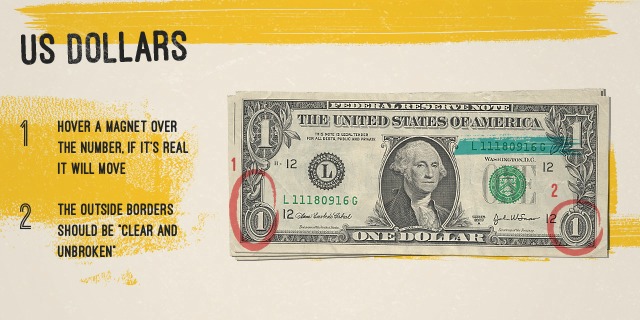
The IEC recommends folding one side of the bill before unfolding it to an angle of roughly 130˚. Hover a magnet over the ‘1’ and watch closely. If the bill moves, it’s real.
It also suggest checking the serial number – if the number is a different number to the Treasury Seal, or matches that of another note, it’s a fake.
Australian Dollars
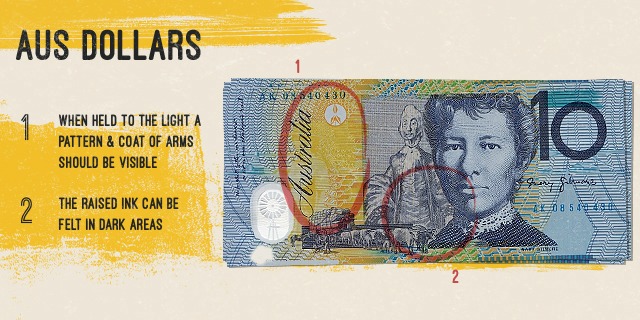
This note all about the feel as much as the look. When held to the light, you should be able to spot the Australian Coat of Arms towards the right hand side of the note.
The dark areas on the note use a special raised ink and can be felt with your finger. If this area is flat, it could be a fake.
Look for the round circle with the diamond-shaped pattern, then hold it up to the light. If real, the patterns will line up to form a seven-pointed star.
Japanese Yen
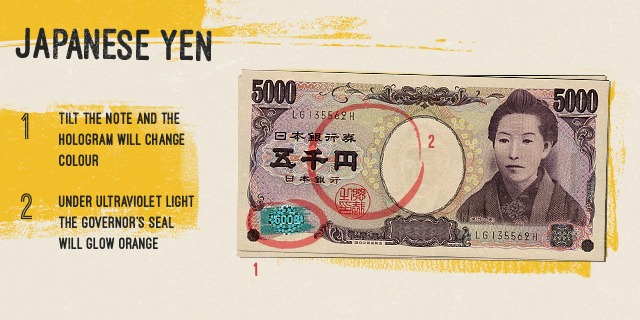
The yen makes use of Japan’s most famed flower – the cherry blossom. If the note is real the hologram of the cherry blosson with change colour and design with the note is titled.
When the banknote is viewed from a certain angle, the value of the note will appear on the bottom left of the front side, while the word “NIPPON” (“Japan” in Japanese) will show on the top right of the back side.
Finally, when held under an ultraviolet light, the Governor’s seal on the front side should glow orange.
Euros
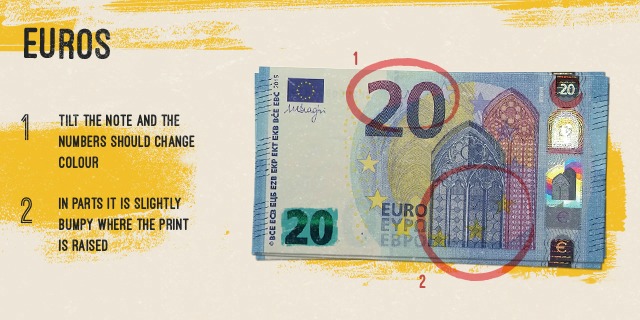
If your Euro is real you should be able to see the numbers on the €50, €100, €200 or €500 notes change colour from purple to olive green or brown when you tilt them.
Similar to the Australian note, you should be able to feel small bumps across the note when you run your fingers across it. If it’s flat you’ve got a fake on your hands.
Canadian Dollars
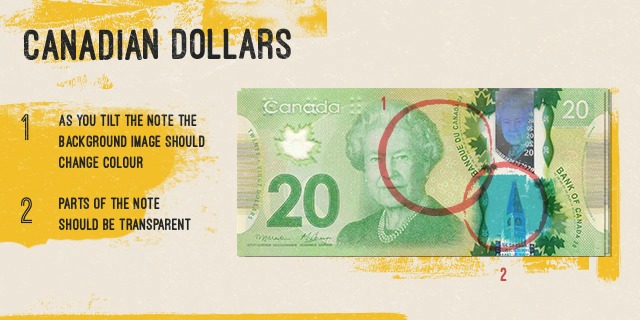
The Queen is at your service on the Canadian note! The metallic portrait of her and the building next to her should be transparent.
The building on the note should also change colour when tilted.
Finally, the maple leaf on the left hand side of the Queen should be transparent – if not, you’ve got a fake!








 Proudly Australian owned and operated
Proudly Australian owned and operated